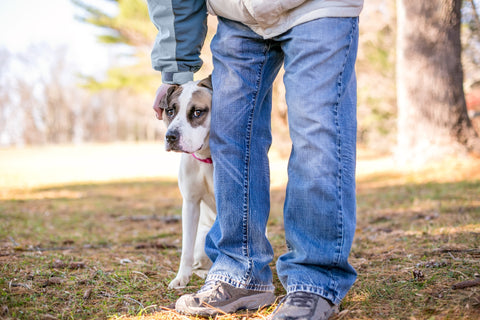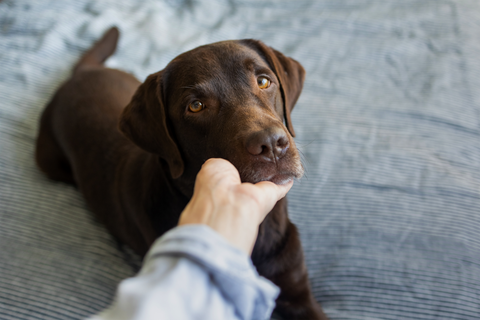Dog language as a key to communication
Body language is your dog's native language, so to speak. If you learn to interpret it correctly, you'll recognize early on how he's feeling and when he needs support.
A loosely wagging tail doesn't automatically mean your dog is in a good mood. Likewise, a seemingly "aggressive" growl can actually be a very polite warning signal: "Please take a step back."
Always observe your dog as a whole, rather than evaluating individual signals in isolation. Some important examples:
Here’s what you should pay attention to:
- Position of the tail: high, stiff, slowly wagging → tension or insecurity
- Ears laid back, gaze averted → stress, de-escalation
- Body low, front legs stretched out (invitation to play) → Relaxed, in a playful mood
- Mouth closed, muscle tension visible → Caution: Can be a harbinger of defensive behavior
- Ducking or dodging → Dog does not want to be touched
A good observer can recognize early on when a dog is feeling unwell, even long before anything happens.
What do growls, barks or whines mean?
Dog noises are often perceived as annoying or disruptive. However, every noise is part of their communication. When your dog barks or growls, they are usually trying to create distance or get attention. And here, too, context is crucial.
Examples of typical meanings:
- Barking at the window: "Something's moving outside. I'll report it."
- Growling while being petted: "I don't like this right now. Please stop."
- Whining when left alone: “I’m insecure and I miss you.”
Growling should never be punished. It's a valuable warning signal. Take it seriously, as it's often your dog's last polite attempt to warn you before he needs to be more explicit.
Why your dog sometimes doesn't listen
If your dog suddenly seems to go "deaf" and ignores you outside, it's rarely out of spite. It's more likely that he's distracted, overwhelmed, or has simply learned that it's not really worth responding to your calls.
Instead of getting louder or getting annoyed, a simple question can help: What would be truly rewarding for my dog right now? Timing and the right reward are crucial in training. If your dog sees that good behavior brings real benefits, he'll be much more willing to participate.
Rewarding correctly: What really works
Good rewards motivate. That doesn't mean your dog needs food for every little thing. But if you want to reinforce behavior, you need something that actually has value for your dog. Especially at the beginning or during difficult exercises, it's worth using high-value rewards. Praise alone isn't enough for many dogs. A treat at the right time, on the other hand, can reinforce new behavior patterns in the long term. Our recommendation: Use a really good reward that your dog really wants in important situations like recall or encounter training.













